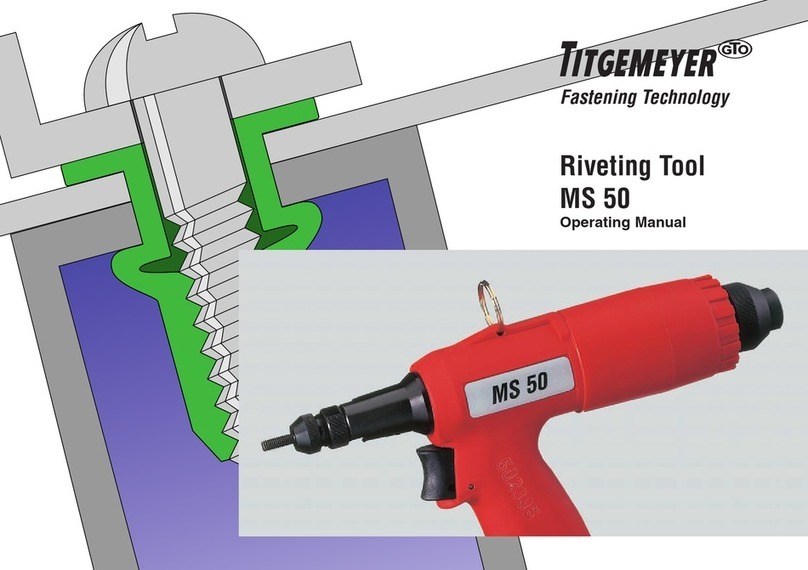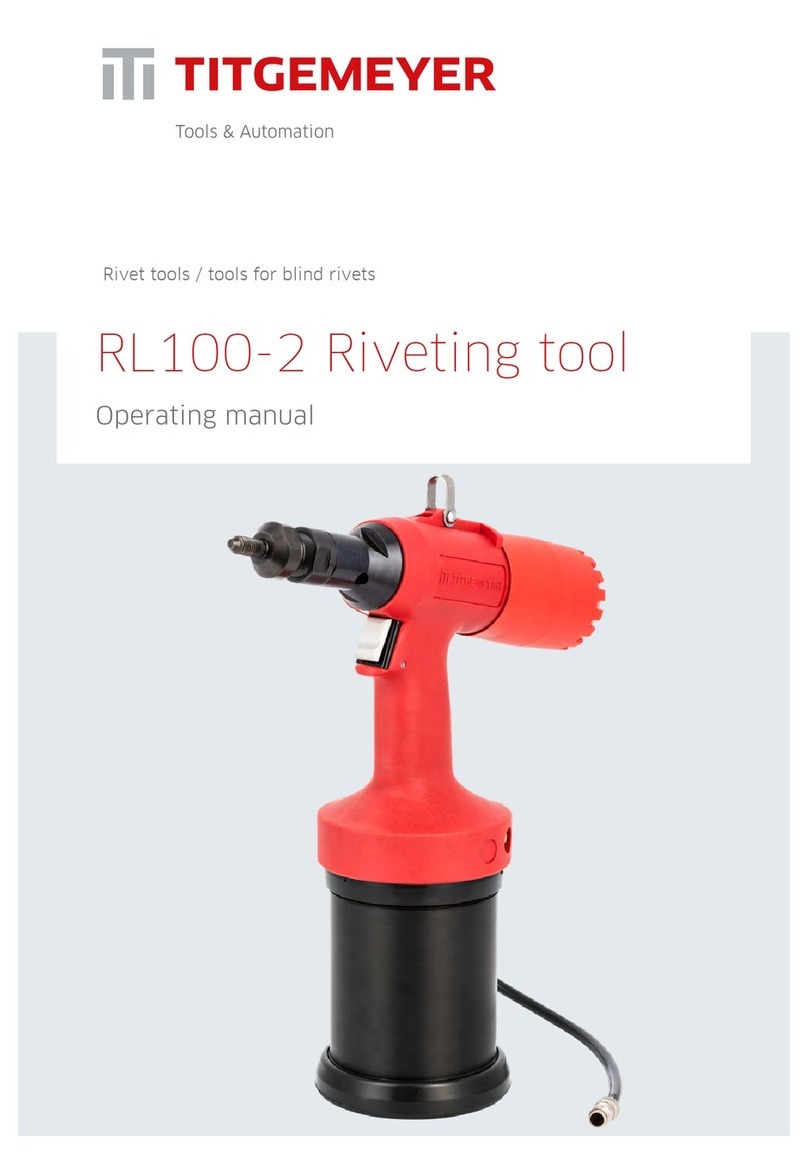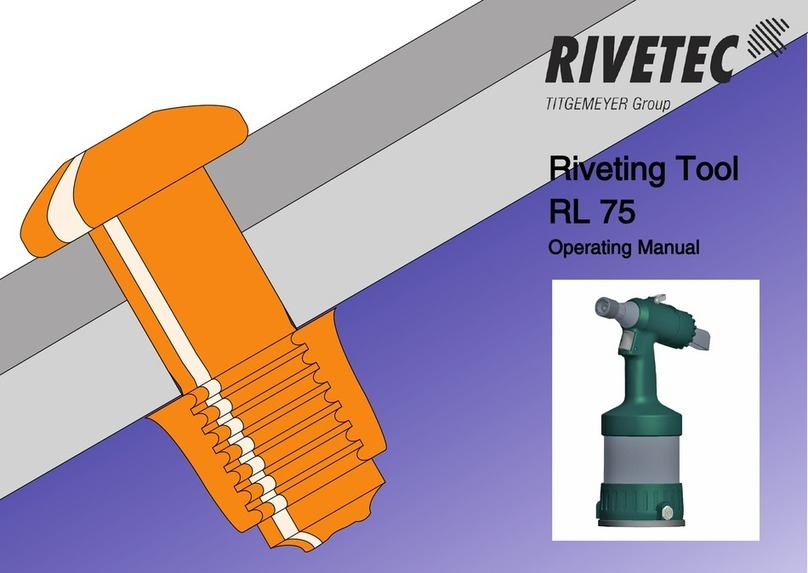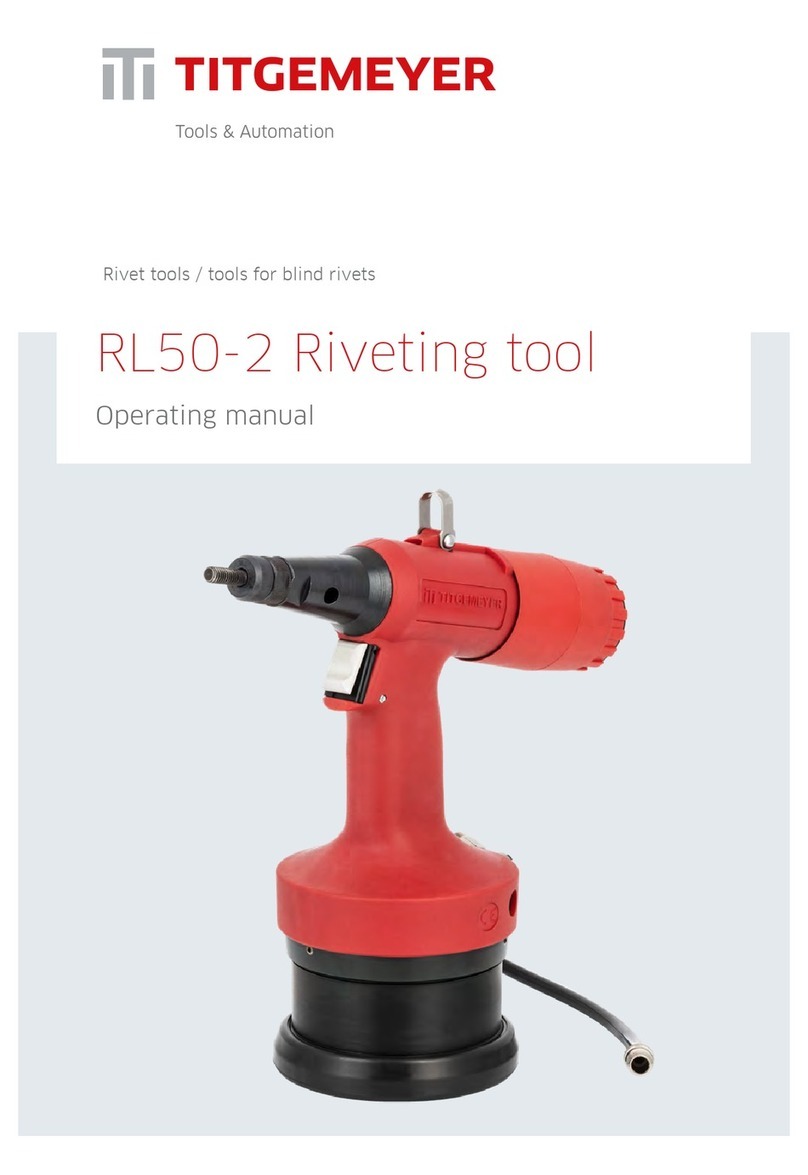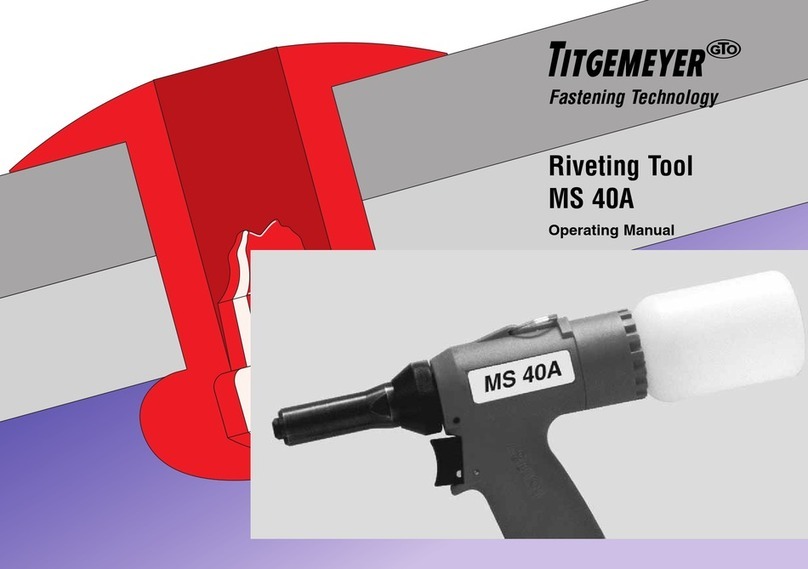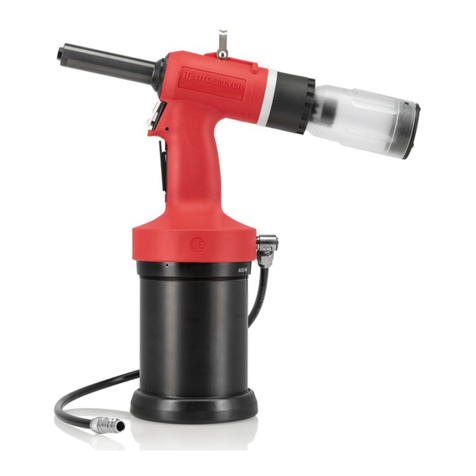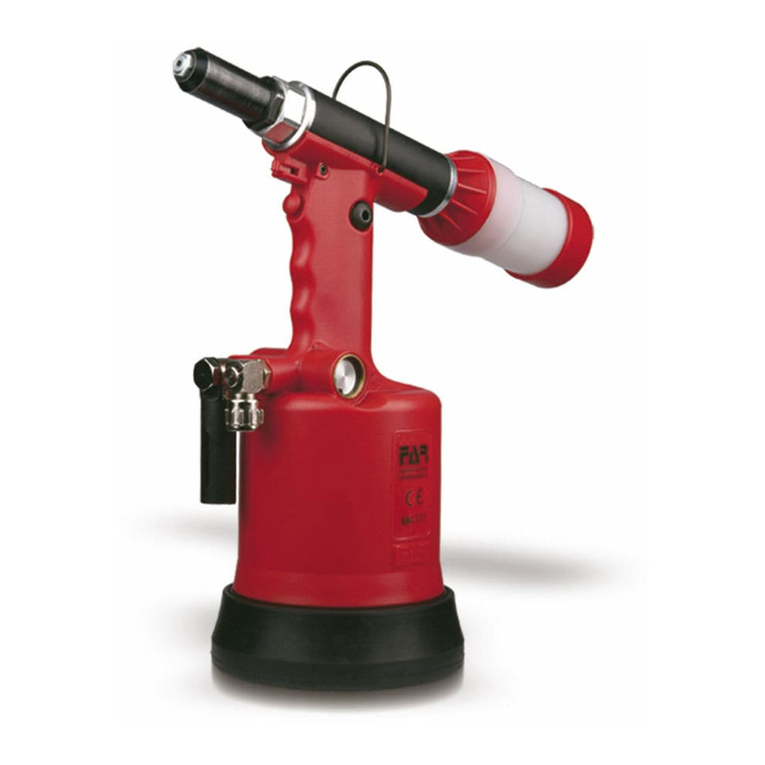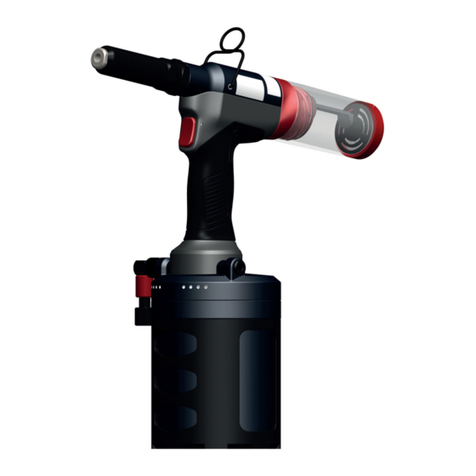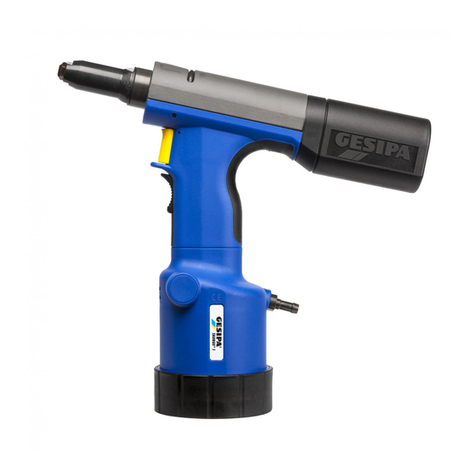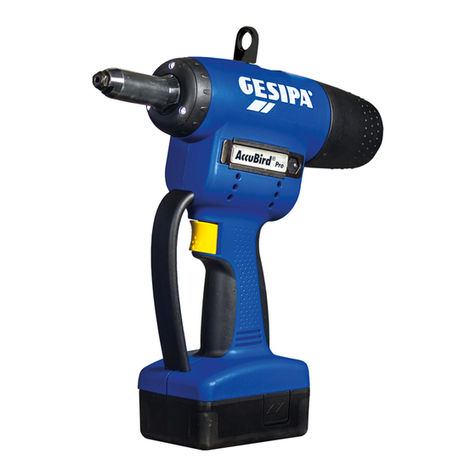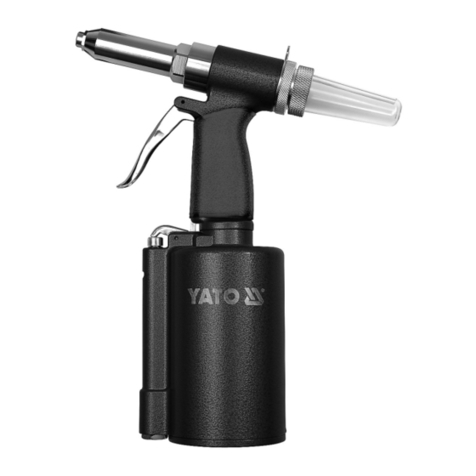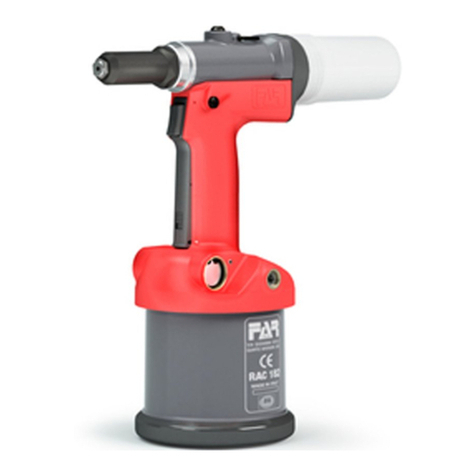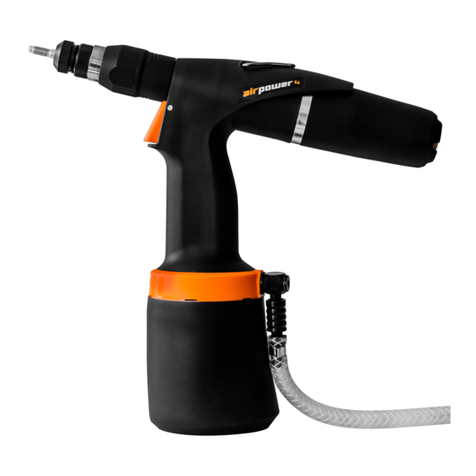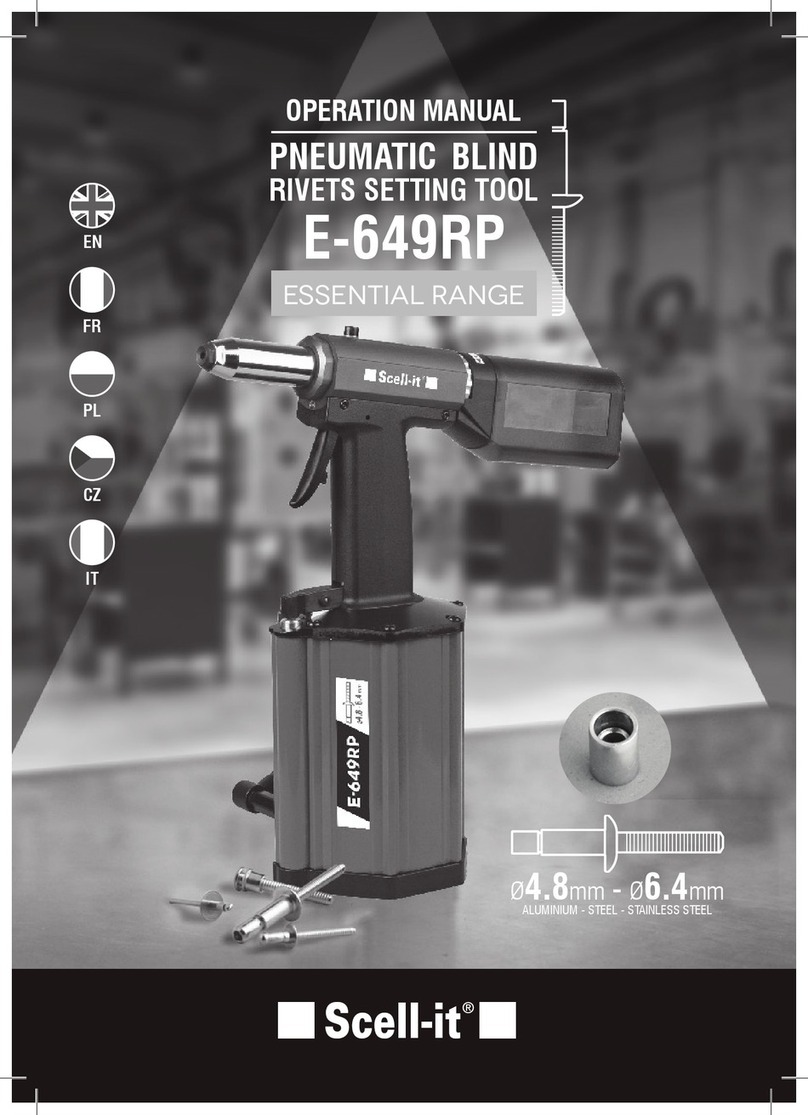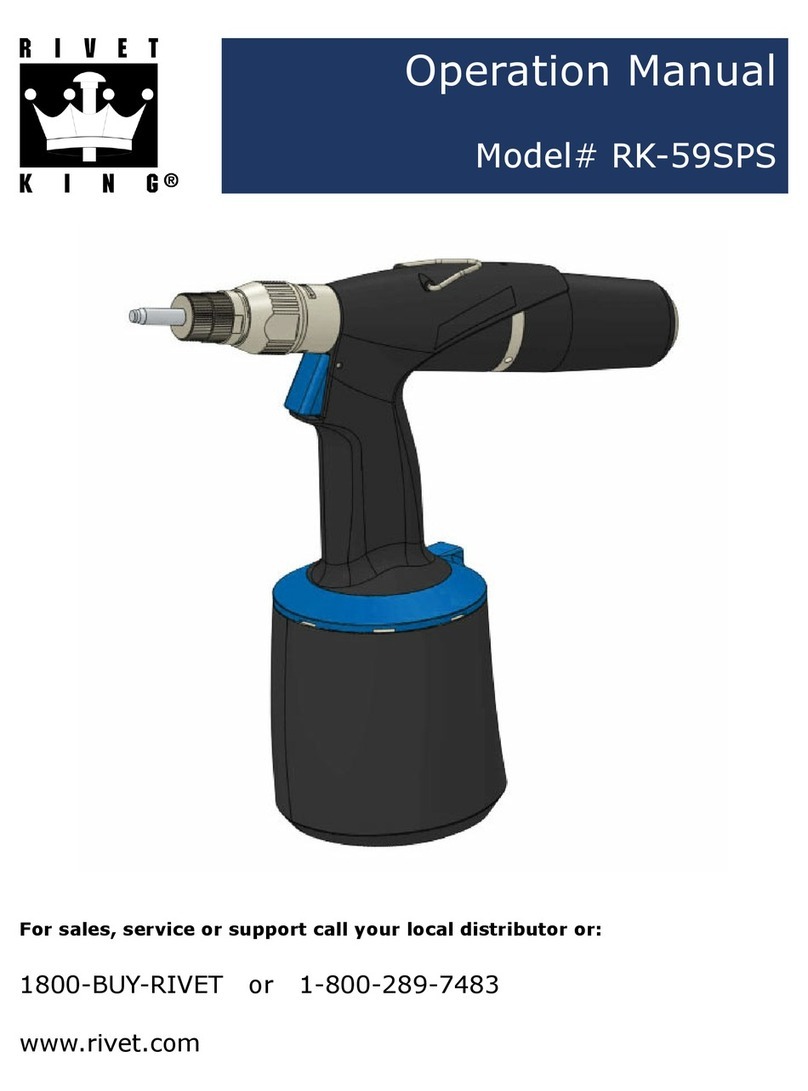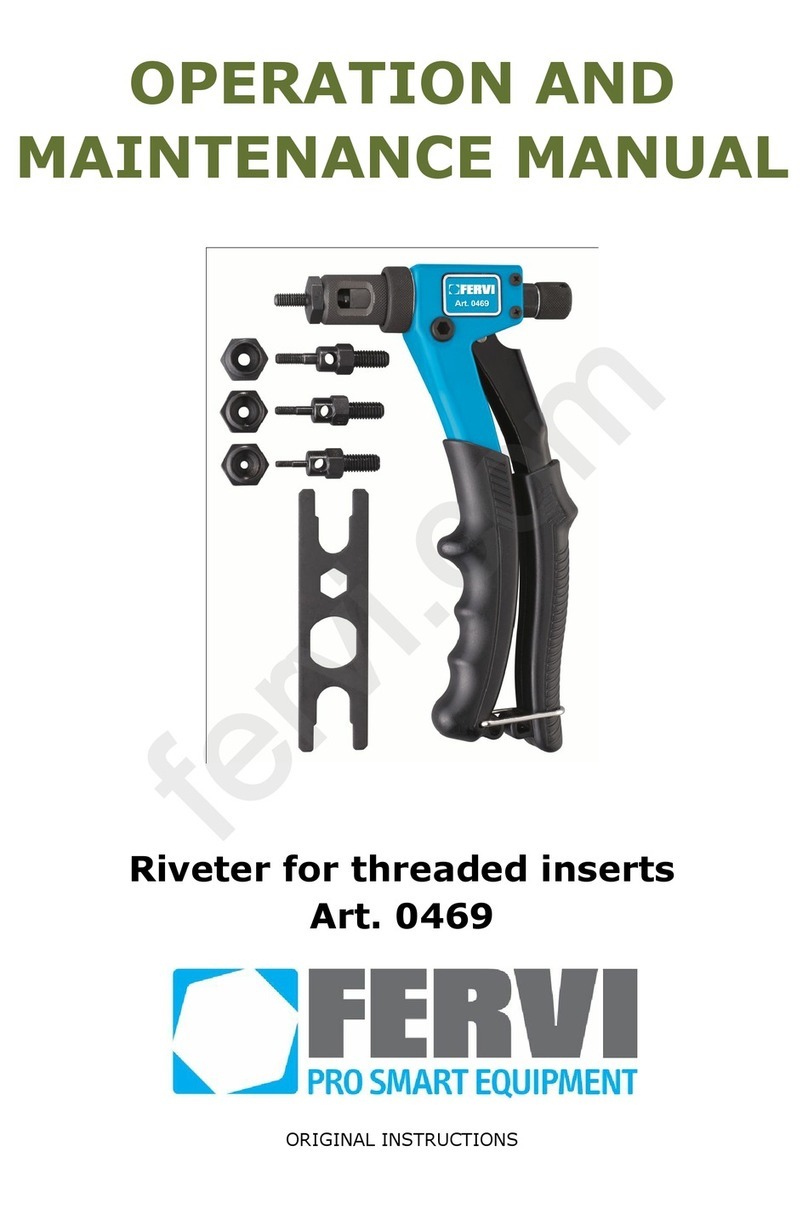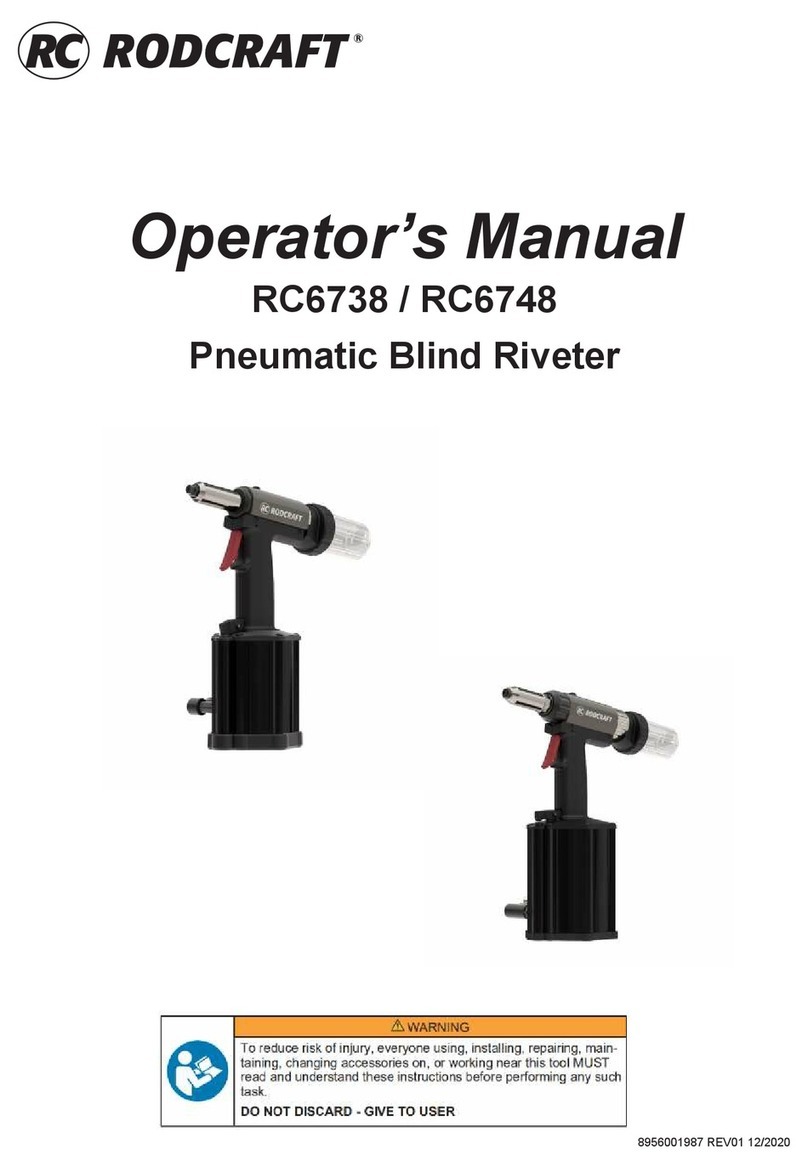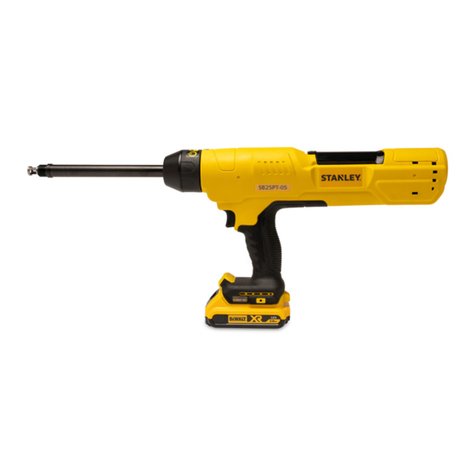
Safety instructions
The riveting tool is exclusively intended for the setting of blind rivet nuts or
studs. The riveting tool RL 50/A/S/AS is designed for the processing of
blind rivet nuts sizes M3 to M10 (M12/ aluminium) and blind rivet studs
size M4 to M8. Upon request mandrels and internal-thread mandrels can
also be delivered with other thread dimensions, e.g. UNC/ UNF.
This riveting tool must be used only as a hand-held device!
The client is fully responsible for any modifications to the riveting tool!
Never throw away or drop the riveting tool!
Please take care that only clean and dry compressed air is let into the
riveting tool. Moisture and dirt can damage the riveting tool. Use only such
compressed air, which falls into class 2 of air quality as per ISO 8573-1.
Caution Hazard of injury because of explosion! Never use the riveting
tool in an atmosphere prone to explosions. Ensure that the
workplace is well lit and clean.
Hazard of injury due to the openly moving compressed air
hose. Connect and lay the compressed air hose properly.
Hazard of injury due to tripping over! Lay the compressed air
hose in such a way that nobody should trip over it.
Attention Material damage! The maximum operating pressure is 7 bar.
For increasing the durability of the riveting tool, it is recommen-
ded to fit a compressed air-maintenance unit in the compressed
air hose.
Application as per the purpose
Improper use
Clean and dry compressed air
H
E
7
Ms50_gb_241001_neu.qxd 30.10.2001 9:01 Uhr Seite 7


